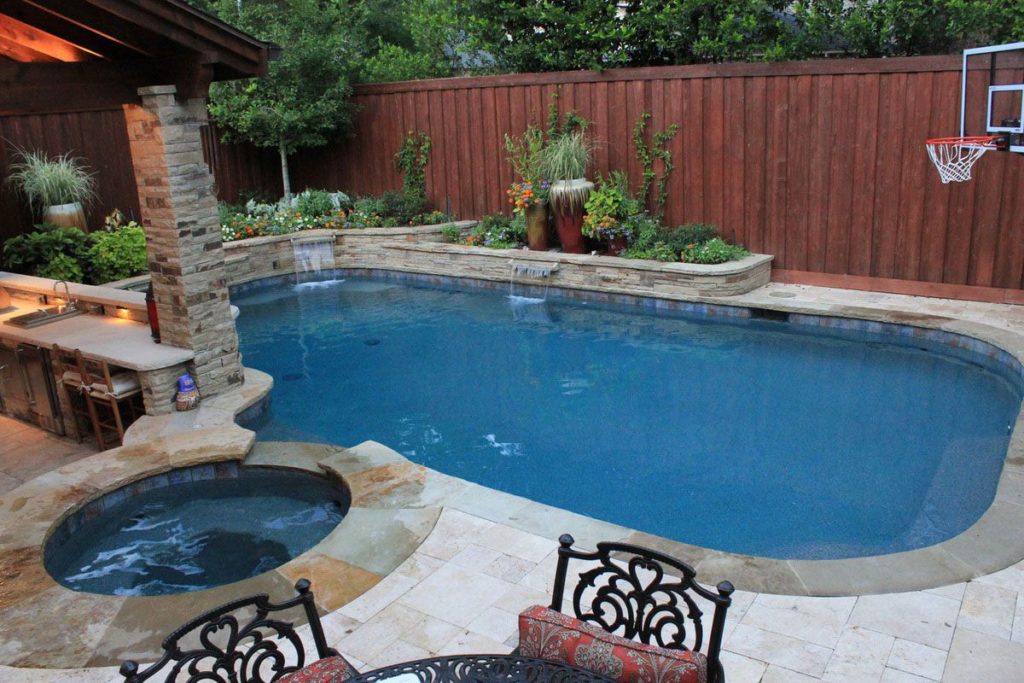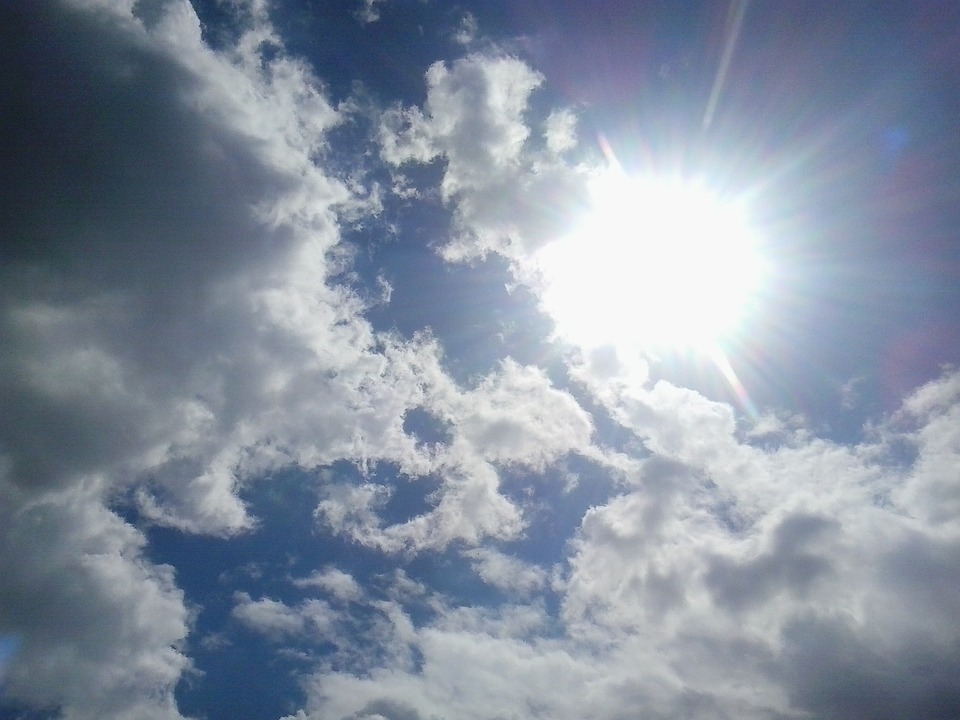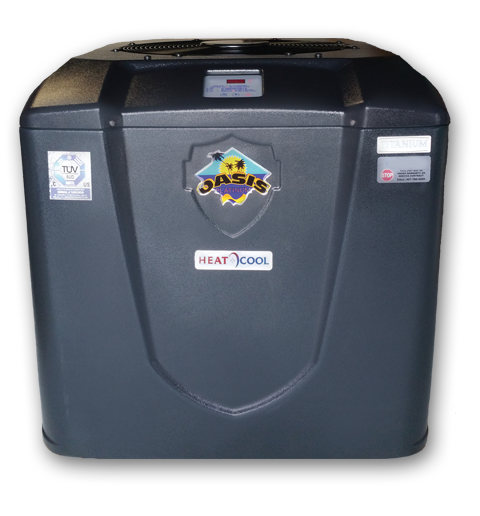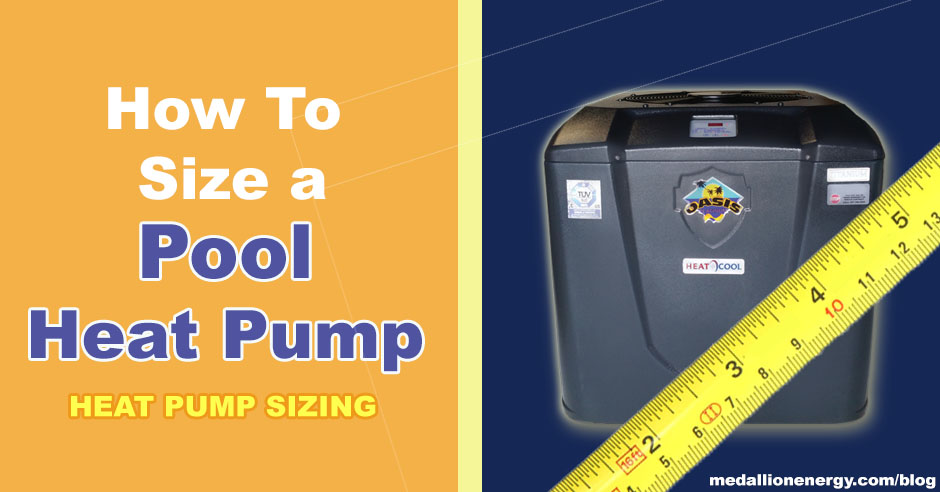Trying to learn how to size a pool heat pump?
In this post, we show you how
(Of course, if you’re in a hurry, why not use our pool heater sizing calculator?)
If you landed on this page, then chances are you’re thinking about installing a heat pump. From unmatched energy efficiency to the ability to heat your pool with, or without the sun — there are countless benefits to heat pump pool heaters.
Of course, to get the most out of your heat pump, it’s important that choose one suited to the conditions you’ll be using it in. Doing so ensures that you get the most consistent and cost-effective performance out of your heater.
It needs to be the right size.
But don’t worry, there are only a few simple things to consider beforehand. And in this post, we go everywhere everything you need to know to size a pool heat pump for your swimming pool.
So let’s just jump right into it
What to consider
Size of your pool



The size of your pool is one the most important things to keep in mind when sizing a pool heater. And this is because the amount of water a heat pump needs to heat (the size of your pool) directly correlates to how powerful it needs to be.
So by that logic, the bigger your pool (volume), the stronger/bigger your heat pump should be. When you size a pool heat pump, you need the surface area of your pool, which is easy to find and explained later in this post.
That said, although pool size is important, it’s not the only factor to consider.
Where you live (climate)



Equally important as the size of your pool, is where you live. Specifically, the climate.
If you live in a climate that’s mostly warm year round, then most of the time, your pool heat pump won’t have to work all that hard. For someone with an average sized pool, using a smaller to standard sized pool heat pump would be ideal.
On the flip side, for pool owners living up north or in more diverse climates, it’s a little bit different. If your pool has to brave all 4 seasons, then it’s important to know how cold it can get during the swim season.
This is because of the way pool heat pumps work. Since they harvest the natural heat in the air, they tend to perform best in warmer climates.
But a heat pump can still do its job even in cold weather. It just has less starting heat to work with, so to compensate, it works a bit harder. In fact, heat pumps like the Oasis Platinum are designed to run all the way down to outside temperatures in the 30s — most other heat pumps usually cut off around the 50-degree mark.
In fact, heat pumps like the Oasis Platinum are designed to run all the way down to temperatures in the 30s — most other heat pumps usually cut off around the 50-degree mark. Pool heat pumps with advanced low-temperature performance, like the Oasis Platinum, can help pool owners in colder climates stretch out their pool season even longer.
The third factor
So with your location and pool size in mind, what’s left to consider?
Your swimming habits.
Do they factor into the actual calculations needed to size a heat pump? Not really.
But if you’re someone who’s in the pool almost every other day, then heating speed may be important to you.
Well, with a stronger pool heat pump comes stronger heating ability. So even if you’re already in a fairly warm climate, it can sometimes make sense to choose a stronger unit if you’re in the pool often and have the extra room in your budget.
Of course, pool heat pumps by nature are designed to provide resilient, and reliable heating in a full range of climates. So even with a standard sized heat pump, you can’t go wrong.
And on that note, let’s get to what you came here for.
How to size a pool heat pump | What size pool heater do I need
You may not realize it, but you’re already halfway done. Yup, with your pool size and location in mind, you have 60% of the information you need to size a pool heat pump.
Of course, for the sake of accuracy, you’ll still need to do a little math. But don’t worry, it’s a really simple formula.
[Want to skip the math and size your heat pump faster? Use our heat pump sizing calculator]
How To Size A Pool Heat Pump



1.) Determine the hottest temperature you want to heat your water up to. This is your target temperature
Ex.) A target temperature of 80 degrees
2.) Find the average temperature of the coldest month of the year for the area you live in
Ex.) If you live in Florida, the coldest average temperature during swim season may be 60 degrees
3.) Subtract the coldest average temperature from the target temperature
Ex.) 80 degrees (target temperature) – 60 degrees (coldest average temperature) = 20
20 degrees is your Temperature Increase number
4.) Calculate the size of your pool/surface area
Use this formula to calculate your pool’s surface area: Width x Length = Surface Area
Ex.) 15ft x 30ft = 450 sq ft (Surface Area/Pool size)
5.) Calculate the amount of heating power (BTUs) needed to heat your pool
You already have all the numbers you need, so here’s the formula:
Pool Surface Area x Temperature Increase x 12 = BTUs needed
Ex.) 450 x 20 x 12 = 108,000 BTUs
According to the above example, a heat pump size of at least 108,000 BTUs or more would be a good choice.
Closing thoughts
So now that you know how to size a pool heat pump, the next step is taking action and getting yours installed.
But if you aren’t quite there yet and still want to learn more, start here:



I didn’t realize how important it is to determine how much water a pump needs pump volume wise to ensure to ensure it is strong enough to do its job. My sister wants to have a home built in the country for her family. I would think that the same concept would be true in getting the right sized well pump.